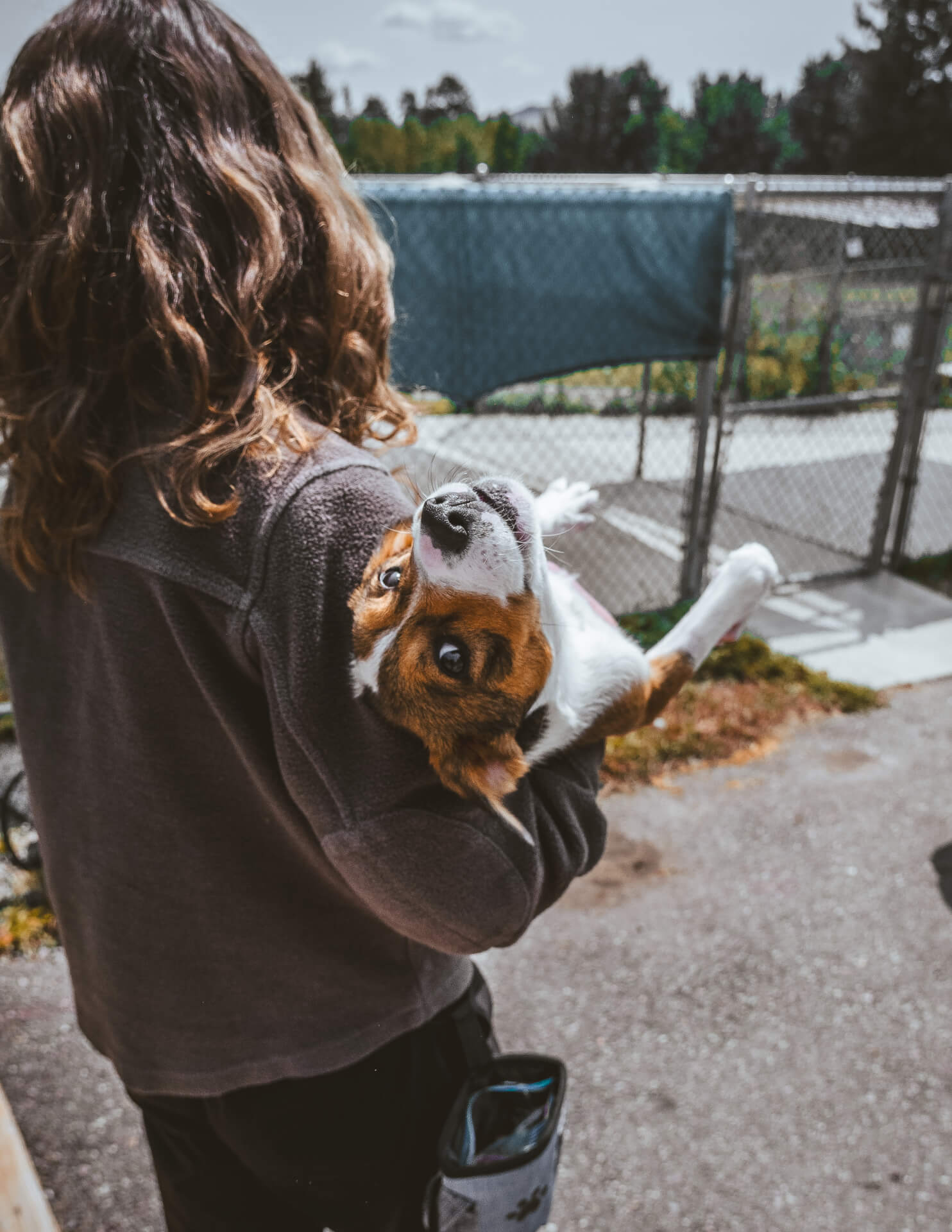
Puppy Chewing
Puppies need to chew to relieve the discomfort of teething, strengthen their jaws, and to investigate the world around them. Dogs also chew for fun, stimulation, and to relieve anxiety. Chewing is a perfectly normal dog behavior, but not all chewing is appropriate. It is up to us to provide age appropriate toys and to teach our dogs what is okay to chew, and what is not. There are several steps that you can take to protect your home and your puppy from inappropriate chewing. Your puppy will go through at least two stages where her need to chew increases due to teething: the first one is from eight weeks to six months as her adult teeth come in and the second occurs during adolescence which can be from six months to one and a half years, depending on the breed.
How To Teach Your Puppy What To Chew
- “Puppy-proof” your house – Put valuable objects away until your puppy learns what is and is not appropriate to chew, and outgrows her teething stage. Keep shoes and clothing in a closed closet, dirty laundry in a hamper, cords tucked away, and books on high shelves. Make it easy for your puppy to succeed by only providing her with access to appropriate items.
- Provide toys and chews – See the Humane Society of Western Montana’s Dog Toys handout for a description of different types of toys and their different purposes. For chew toys try Nylabones®, Greenies® Smart Chew™ bones, Dental KONGs® and natural raw bones. Take note of what your puppy prefers and keep them on hand. Keep your pup from getting bored with her toys by introducing new toys or rotating your dog’s chew toys every couple of days. Offer your puppy edible things to chew like bully sticks, pig ears, rawhides, etc. but always supervise your puppy to prevent choking. (Caution: Only give your dog natural bones that are sold specifically for chewing. Do not give her cooked bones from your leftovers as these can splinter and cause serious injury. If you have any questions, speak with your veterinarian about what is safe for your puppy.)
- Praise and reward your puppy for making the right choice – Tell your puppy when she has chosen the right item to chew on by praise and tossing her a treat! Have a toy in hand when you greet her and teach family members and guests to offer a toy to your puppy and engage her in a game of fetch or tug. These simple things teach your puppy what to play with and chew on as well as how to play appropriately with people.
How To Manage Your Puppy’s Chewing
- Restrict access – It can be hard to keep your home puppy-proofed 100% of the time. However, you can restrict your puppy to the parts of the house that are not puppy-proofed, like a child’s play room scattered with tempting toys. Use baby gates, doors, tethers, ex-pens and a crate to control your puppy’s movements throughout the house. Whenever your puppy isn’t being actively supervised she should be in her crate or puppy-proofed space, with toys and a stuffed food toy to keep her occupied. It’s not forever, and managing what your puppy has access to now when she is particularly prone to making poor chewing choices means she won’t bother to chew on those things as a mature adult!
- Supervise – Supervise your puppy during all waking hours until she learns the rules of the house and use confinement when you can’t. If she picks up an inappropriate item, immediately offer a tasty treat or irresistible squeaky toy instead. Trade the toy for the inappropriate item and praise your puppy for giving it to you. Play trading games with toys, and whenever the opportunity arises, teach your puppy that giving things to you will earn them something in return: a game of fetch, a snack, another toy, etc.
- Exercise – Provide your puppy with plenty of physical exercise (playtime with you and with other dogs) and mental stimulation (training, social visits, etc.). A tired puppy is a good puppy! Check out the Puppy Kindergarten class on our website, myhswm.org, for more information and to sign up.
- Be consistent – Only give your puppy appropriate toys and chews. It will confuse your puppy if you give her an old sock to play with and then she is scolded for chewing up the socks from the hamper. She will not understand that some socks are okay to chew and others are off limits. Only provide her with appropriate, designated toys to play with and chew.
- Deterrents – There are many products on the market designed to deter chewing. These are typically designed to smell or taste bad so that a dog is not interested in chewing the item. These products can certainly help but they need to be reapplied periodically and won’t teach your dog what is okay to chew. Supervision and restricting access to tempting items are still required to teach your puppy the rules of the house.
What NOT To Do
- Chase your puppy to get the item back – An impromptu game of keep away, anyone? Your puppy will learn very quickly to pick up off-limits items to get your attention and initiate play! It is much better to reward your puppy and lavish her with attention when she is chewing on an appropriate object. If you have to take away an inappropriate item, approach casually without a fuss, or try to excitedly call your puppy to you!
- Take the item away without a trade – Puppies don’t know what they have is off-limits; they see the item as a valuable new “toy,” even if it’s our sock! When we snatch the item away and scold our puppy, at best we aren’t teaching them what is appropriate to chew on, and at worst we may teach your puppy to guard their valuable new “toys” or even swallow them! Always provide an appropriate toy or a treat to encourage your puppy to drop the inappropriate item and give them what they’re allowed to have instead.
